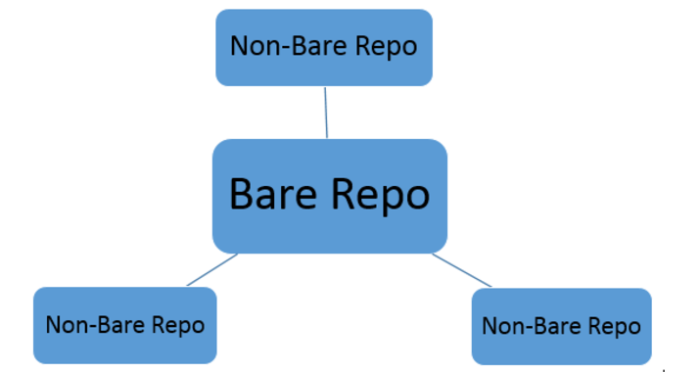
 Data Structure
Data Structure Networking
Networking RDBMS
RDBMS Operating System
Operating System Java
Java MS Excel
MS Excel iOS
iOS HTML
HTML CSS
CSS Android
Android Python
Python C Programming
C Programming C++
C++ C#
C# MongoDB
MongoDB MySQL
MySQL Javascript
Javascript PHP
PHP
- Selected Reading
- UPSC IAS Exams Notes
- Developer's Best Practices
- Questions and Answers
- Effective Resume Writing
- HR Interview Questions
- Computer Glossary
- Who is Who
What is bare Git repository?
Introduction
Bare repositories are the same as default, but they cannot be committed to. Bare repositories do not have a working tree, so they cannot track changes made to projects. All project files/subdirectories are stored in a working tree. All project files are stored in a specific folder within the bare repository, which is basically a .git folder.
In this article, we will explore more about bare repositories
What is Git Repository
A Git repository contains a collection of files and folders that track the history of your codebase's changes. It has been extremely useful for me as a developer because it keeps one view of a project codebase, backs up a backup copy of the entire project history, allows me to quickly retrieve older versions of the entire codebase or individual files, debugs code, shows who made specific changes, etc. Development teams find it extremely useful.
Bare Git Repositories: What are they
When git init --bare is run, a bare repository is created for sharing. A bare repository is a place where all members of a team can pull changes from a repository so that they can be shared with other members of your team so that you are able to collaborate on changes (often the easy solution is GitHub) if you're working with a team of developers. Git's distributed nature prevents anyone from directly editing the shared centralized repository. As an alternative, developers are able to clone the shared bare repo, make changes locally, then push their changes back to the shared bare repo once they have made the changes in their own working copies, so that others will be able to see their changes.
A working tree is not required since anyone edits files directly in the shared bare repository. As users push code to the repository, the working tree would only cause conflicts. There is no working tree in bare repositories, which is why they exist.
Why do we need bare git repositories
Collaborating on a project requires a central repository so all changes can be stored and prevented from conflicting between versions on each person's computer. By having a central repository, it is also possible for any new contributor to clone the repository into a local one without the need to install unsaved changes or to deal with conflicting work by others (in short, no mess). Central repositories were intended to be similar to reference repositories.
Initially, only Bare repositories could be used as remote repositories, and this required using a remote repository as a central one. Recently, git has changed to allow central repositories not to be bare, so many people aren't familiar with it. Pushing and cloning are the only operations possible on the Bare Repository.
Why is only the bare repository is used as the central repository for syncing tasks
It is always recommended to create central repositories as bare repositories since pushing branches to a non-bare repository could result in overwriting changes.When a repository is marked --bare, it is regarded as a storage facility instead of a development environment. For virtually all Git workflows, this means that the central repository will be bare, and the local repository of the developer will not be bare.

Creating a remote central repository is the most common application of git init --bare. In order to create your central repository, you first need to connect to the server that contains it over SSH. After that, you navigate to where you'd like to store the project. To create a central storage repository, you use the --bare flag. A local copy of my-project.git would be created on developers' development machines by cloning my-project.git.
Advantages and Disadvantages of Bare Git Repository
Advantages
It is possible to gain real-world experience using a distributed version control system.
Gitlab, Github, or any other third-party client is not necessary to use your own remote git repository.
You don't need to set up an account with a third-party client.
This is a convenient solution for a small remote team.
Disadvantages
Additional headaches are associated with maintaining a remote server.
All files might be lost if the server is lost.
We would be unable to visualize the files stored in our remote repository.
Conclusion
In this article, we have explored the bare repositories in Git in detail. I hope you have understood everything about it.

